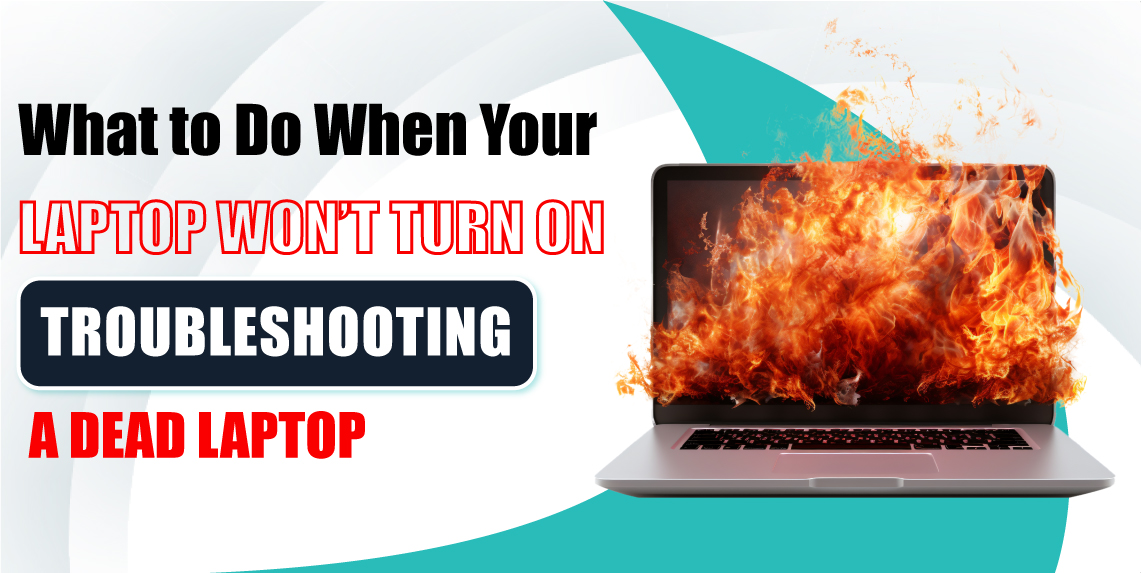
A laptop that won’t turn on is one of the most frustrating tech issues you can face. Whether you're dealing with a complete power failure or just an unresponsive screen, figuring out the problem can be daunting. The good news is that many laptop power issues can be resolved with some basic troubleshooting steps. This article will guide you through several potential causes of a dead laptop and provide solutions to get your device back up and running.
One of the most common reasons a laptop won’t turn on is a faulty or disconnected power source. If your laptop is completely unresponsive, the first thing to do is check whether it's receiving power.
Verify the power adapter: Ensure that your power adapter is plugged into both the laptop and the wall socket securely. Sometimes the connection may come loose, especially if you're using your laptop in different locations frequently.
Check the power outlet: Test the wall socket by plugging in another device, like a phone charger, to confirm the outlet is working.
Look for damage on the adapter and cable: Inspect the power adapter and charging cable for any visible damage, such as frayed wires or bends. If your cable looks damaged, try using a different compatible charger.
If your laptop has a removable battery, it might be the cause of the problem. Removing and reinserting the battery can sometimes reset the connection and solve the issue. Here’s what to do:
Power off the laptop (if it’s already on or stuck in sleep mode).
Unplug the charger and remove the battery.
Hold down the power button for 30 seconds to drain any residual charge from the capacitors.
Reinsert the battery and plug in the charger before attempting to turn on the laptop again.
If your laptop turns on without the battery inserted, the battery may need to be replaced.
A hard reset can solve many laptop power issues, especially if the system has become unresponsive due to a software glitch or system freeze. Follow these steps:
Disconnect all external devices, including USB drives, external keyboards, and monitors.
Unplug the power adapter from your laptop.
If your laptop has a removable battery, take it out.
Press and hold the power button for 30 seconds to drain the laptop of any residual power.
Plug the power adapter back in, but leave the battery out for now, and try turning on the laptop.
If this works, reconnect the battery and continue to use your laptop as normal.
Sometimes your laptop is actually on, but the screen isn’t displaying anything. This could make it appear as if the laptop is dead. To check if your laptop is experiencing display issues, follow these steps:
Look for power indicator lights: Check for any lights on the laptop that suggest it's receiving power. This could be the power button light, keyboard backlight, or charging indicator.
Connect to an external monitor: If you suspect a display issue, try connecting your laptop to an external monitor using an HDMI or VGA cable. If the external monitor works, then the problem likely lies with your laptop’s display or graphics card.
If pressing the power button yields no results, the button itself could be faulty. In such cases, you might need to take your laptop to a professional for repair. However, some laptops allow you to turn them on by connecting them to an external keyboard, depending on your system's settings. If this works, you know the issue is with the power button.
Laptops often have safeguards that prevent them from turning on when they’ve overheated. If your laptop feels unusually warm, give it some time to cool down before trying to turn it on again. Laptops can overheat due to blocked vents, malfunctioning fans, or thermal paste issues.
Ensure proper ventilation: Use your laptop on a hard surface rather than a bed or couch, as soft surfaces can block airflow.
Check for dust buildup: Dust can accumulate in the vents and fans, causing overheating. You can use compressed air to clean out the vents.
External devices such as USB drives, SD cards, and external hard drives can sometimes interfere with your laptop’s ability to boot up. If your laptop won’t turn on, disconnect any attached peripherals and try again. It’s possible that one of these devices is causing a boot issue.
If none of the above steps work, it might be time to consult a professional. The issue could be due to faulty hardware, such as a dead motherboard, faulty RAM, or a broken power jack. A technician will be able to run diagnostic tests to determine the root cause of the problem.
When your laptop won’t turn on, it can be frustrating, but there are several troubleshooting steps you can take to identify the issue. From checking the power source to performing a hard reset, most problems can be resolved without needing professional help. However, if your laptop still doesn’t respond, it may be time to bring it to a repair shop. Keeping these tips in mind will help you troubleshoot and potentially fix a dead laptop, getting you back to work or play as quickly as possible.